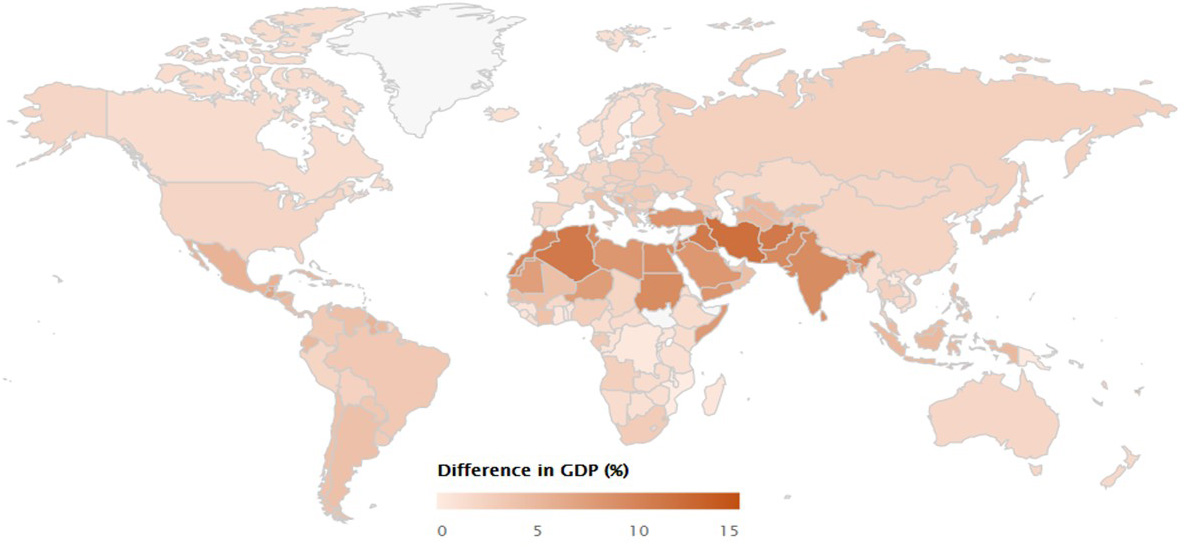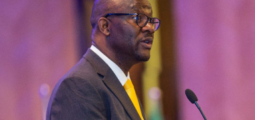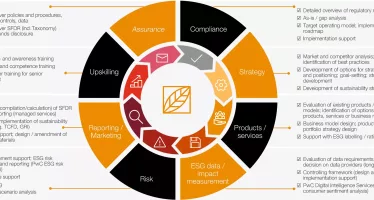Turning Promises Into Reality – The Business Case for Gender Equality in Achieving the SDGs
By Paula Tavares and Otaviano Canuto

Otaviano Canuto
As world leaders gathered this month for high-level talks at the 74th United Nations General Assembly, pressing global issues were at the forefront of discussions, including progress toward the 2030 Agenda and the Sustainable Development Goals (SDGs). While taking stock of how far we have come in realising commitments in key areas, including to end poverty and hunger, expand access to health, education, justice and jobs, promote inclusive and sustained economic growth, and protect our planet from environmental degradation, heads of state and government convened at the SDG Summit also faced heightened pressure to increase actions and implementation efforts to achieve the 2030 Agenda goals and concrete targets agreed upon in 2015.
Four years into the implementation of the 2030 Agenda, countries have made efforts to align national development plans and strategies with the SDGs and address the different challenges, with positive results in some areas. Notwithstanding, the 2019 Sustainable Development Goals Report shows slow progress in many indicators: at current rates, 6% of the world’s population is predicted to still be living in extreme poverty by 2030, global hunger is increasing, and vulnerabilities remain high, with inequalities in wealth, incomes and opportunities increasing in and between countries. Additionally, environmental degradation and climate change continue at rates that bring potentially disastrous consequences for humanity.
As the world enters the 10-year countdown to making good on mutual commitments on behalf of a sustainable future for the planet, achieving Goal 5 of gender equality and the empowerment of women and girls is on the front burner of most governments, the business sector and civil society. Indeed, as stated in the 2019 SDG Report, gender equality is a key area for action to ensure progress across targets, including poverty alleviation, reduced inequalities and in particular, economic growth.
Gender Equality and the Economic Outlook
Nonetheless, progress on gender equality and reaping its potential impact on inclusive growth has also been limited. In parallel, according to the OECD’s latest Interim Economic Outlook, warning signs of a potential slowdown in the global economy are multiplying, with a large share of developing countries struggling to achieve sustained growth in per capita incomes and productivity.
Increased debt vulnerability and challenges faced by both emerging and developed economies, combined with rising income and wealth inequality, risk undermining efforts to achieve the Sustainable Development Goals, as predicted in the World Situation and Prospects 2019. Moreover, even where greater expansion has occurred, inequality remains high and not all are benefiting from improved economic conditions. The persistence of low economic growth at the global level and the potential crisis looming over the world may further thwart efforts and add to the negative impacts.
In this context, urgent and concrete measures are needed to redirect the global economy trajectory toward a sustainable path, which calls for sound macroeconomic policies and strategies adopted by countries for boosting the economy. This includes ensuring a strategic focus on issues of inclusive growth, employment and inequality, through addressing issues hindering gender equality and creating conditions for shared prosperity and sustainable growth.
Why investing in women matters
No country or economy can achieve its potential while critical gaps persist between men and women. As half the world’s population, women have an equal role in driving economic growth and sustainable development. However, their contribution remains far below its potential, thwarted by gender-specific constraints.
Women’s full participation in the labour force and earning potential is limited by formal and informal gender-specific barriers in nearly every country today. This includes legal barriers to employment and earning opportunities affecting over 2.7 billion women globally, as Women, Business and the Law data and research shows (chart 1). According to a recent IMF staff study, despite progress, female labour force participation remains lower than that of men’s, with no advanced or middle-income economy having reduced the gender gap below 7 percentage points. ILO research shows that women are less likely to participate in the labour market and more likely to be unemployed in most parts of the world, with significant potential GDP growth across the world if participation rates were closed by a mere 25% (chart 2). In addition, gender wage gaps are high, and women are overrepresented in the informal sector and among the poor.

Chart 1: Gender equality in labour law is associated with more women working and earning more relative to men. Source: World Bank, Women, Business and the Law
As a result of gender-specific barriers, World Bank estimates show that women account for less than 40% of global human capital wealth, with global losses amounting to $160 trillion in wealth because of differences in lifetime earnings between men and women. Lagarde and Ostry (2018) also argue that this uneven playing field between women and men comes at a significant economic cost as it hampers productivity and weighs on growth.

Chart 2: Potential GDP growth if women participation rates were increased by 25%. Source: ILO
Research by McKinsey (2016) additionally shows that the share of women’s care work which goes uncompensated amounts to an estimated value of $10 trillion, or 13% of global GDP. Evidence from another report further documents that the lack of parity for women in the workforce, including in wages, career growth opportunities and in leadership positions, also hurts business and economic growth.
There is ample evidence, including by the IMF (2013), that when women are able to develop their full labour market potential, there can be significant macroeconomic gains. The employment of women on an equal basis would allow companies to make better use of the available talent pool, with potential growth implications. Closing gender gaps to women’s economic participation by reducing barriers to women in the workplace would significantly boost welfare and growth (chart 3), while equal access to inputs would raise the productivity of female-owned companies. Agénor, Canuto & Pereira da Silva (2014) and Agénor & Canuto (2015) approach several channels through which gender equality affects macroeconomic growth.

Chart 3: Economic gains. Reducing barriers to women in the workplace significantly boosts welfare and growth (percent). Source: IMF staff calculations (2013)
Note: See “Economic Gains from Gender Inclusion: New Mechanisms, New Evidence”, IMF Staff Discussion Note No. 18/06 for explanations of the calculations
In designing macroeconomic policy for promoting growth, gender-specific constraints should be taken into account, as policy goals can be thwarted if gender effects are not taken into consideration (Seguino, 2019). This could further enhance the potential impact of policy in boosting economic activity through increasing women’s economic participation.
Equality of opportunity is key to women’s economic participation
Ensuring equal opportunity in access to jobs and entrepreneurship and enabling improvements in the productivity of their work is key to boosting women’s economic participation. This includes removing gender-discriminatory laws and creating a regulatory framework that enables women’s labour force participation and business ownership.
Access to opportunities is a major source of gender inequality (Klasen 1999) and as research by Gonzales et al shows, restrictions on women’s rights to inheritance and property, as well as legal impediments to undertaking economic activities, are strongly associated with larger gender gaps in labour force participation.
According to the World Bank’s Women, Business and the Law, women in many parts of the world still face discriminatory laws and regulations at every point in their economically active life. Globally, over 2.7 billion women are legally restricted from having the same choice of jobs as men and in 59 economies no laws exist on sexual harassment at work, leaving over 500 million women unprotected. Additionally, in 75 economies, women’s property rights are constrained; and in 5 women are not allowed to register a business in the same way as a man. Women’s financial inclusion is also impacted by such legal barriers; in 62% of countries worldwide, no laws exist to prohibit gender-based discrimination in financial services. And still today, the research shows that women are accorded only three-quarters of the legal rights that men enjoy globally, constraining their ability to get jobs or start businesses and make choices that are best for them, their families and their communities.
On the other hand, where women have equal opportunities to access jobs, more women work and earn relative to men, and where they have access to property, they can leverage finance to start and grow businesses. Over the last ten years, considerable progress has been made in improving laws and regulations to promote women’s economic inclusion. This includes, for example, 35 countries that implemented legal protections against sexual harassment at work, protecting nearly two billion more women than a decade ago, 22 economies that removed restrictions on women’s work, reducing the likelihood that women are kept out of working in certain sectors of the economy, and 13 economies that introduced laws mandating equal remuneration for work of equal value. But much faster progress is needed if gender equality is to be achieved in the next ten years. The World Economic Forum’s Global Gender Gap Report 2018 makes a stark projection: at current rates of progress, it may take another 202 years to close the economic gender gap globally; the impact of which will be felt on the global economy as a whole.
Bottom Line
Ultimately, it is clear from the evidence that inequality, both income and gender, impede growth. Given that barriers to women’s economic participation are somewhat mitigated in countries that have achieved higher levels of gender equality, issues remain regarding those that are potential candidates to falling into the middle-income trap (Canuto, 2019). This is especially true for low-income countries.
Comparative evidence from the IMF (2016) shows that income and gender inequality, including from legal gender-related restrictions, arguably impede growth mainly in countries at earlier stages of development. Nonetheless, the adverse effect of legal barriers to women’s participation in economic activities remains significant for countries at different stages of development.
As we enter a decade that will be decisive for both current and future generations, it is the world’s responsibility and within its power to make the next decade one of action and delivery for gender equality, sustainable development and inclusive growth. This requires urgent and focused policy-making that takes into account gender-specific impacts. Time is now for investing in women and ensuring countries and the world can honour commitments and achieve the Goals agreed upon to ensure a prosperous and sustainable world for generations to come.
Paula Tavares is a Senior legal and gender specialist at the World Bank with expertise in international development and comparative analysis focusing on gender equality, women’s economic inclusion and private sector development. Her work with the World Bank’s Women, Business and the Law currently focuses on promoting gender-informed policy making, improving the legal framework protecting women from discrimination and gender-based violence, and enhancing women’s economic opportunities.
Otaviano Canuto is principal at the Center for Macroeconomics and Development, a senior fellow at the Policy Centre for the New South and a non-resident senior fellow at Brookings Institution. He is a former vice-president and a former executive director at the World Bank, a former executive director at the International Monetary Fund, and a former vice-president at the Inter-American Development Bank. Otaviano has been a regular columnist for CFI.co for the past seven years.
You may have an interest in also reading…
PwC: ‘When it Comes to Securing the Future, There’s No Time Like the Present’
ESG and sustainability priorities are increasingly important business considerations; PwC Luxembourg is on the case… Goodbye theory, hello action —
US Welcomed at Davos as the New Emerging Market
The annual meeting of top businessmen, leading public officials, and a host of other VIPs in Davos usually sees emerging
Valerie Jarrett: The Power of Whispers
One of only three senior advisers to US President Barack Obama, Valerie Jarrett holds more power than anyone else in


















































































